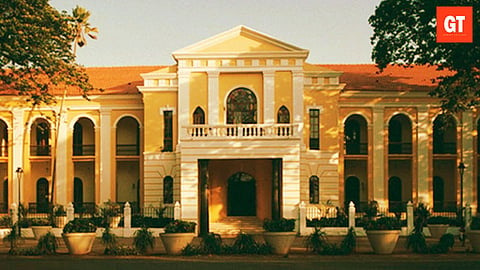

The Goa Medical College is a familiar name in Goa, and needs no introduction. At over 300-years-old, it is one of the oldest medical colleges in, not just India, but Asia, too. But, it wasn’t always called GMC, nor was it located in Bambolim.
THE NEED FOR A HOSPITAL
In the 1600s, the capital of Goa was rife with disease. The colonial population had dwindled enormously due to a spate of epidemics, as a result of which, Viceroy Francisco de Távora, 1st Count of Alvor, is reported to have called Old Goa as the ‘graveyard of the Portuguese.’
Alarmed by the deaths, Viceroy D Cristovam de Sousa Coutinho, in 1687, appealed to Portugal’s State Secretary for Overseas Affairs to introduce the teaching of medicine to some of the natives. And so, the Portuguese government appointed two professors from Coimbra University, in Portugal, to not only treat patients, but also to teach medicine to the locals, thus laying the foundation of a medical school in Panelim, in Old Goa.
In 1759, the government took over the hospital in Panelim. Following many reminders, a three-year course in medicine and surgery was finally started at the Hospital Militar de Goa (Military Hospital of Goa) at Panelim, in 1801.
In 1842, the Panelim military hospital was shifted to the old Palacio dos Maquineses (Palace of Maquineses), located in the midst of rice fields and palm groves in Panjim, along the banks of the Mandovi. Built in 1702, the palace was once the home of two, wealthy Portuguese brothers, the Maquineses -- squadron leader Diogo da Costa Ataide e Teive and Cristovao da Costa Ataide e Teive. The hospital was palatial and squeaky clean.
This palace housed a chapel, which was built in the early 18th century, and was dedicated to Nossa Senhora das Dores. In 1781, the chapel was repaired and dedicated to Nossa Senhora de Vitoria. The statue of Our Lady was brought from the Betim House of Cathecumens the same year.
During the Portuguese regime, people from all walks of life attended the services in the chapel of Maquineses, as well as the feast of Our Lady of Victoria. On the feast day, the Patriarch attending the service would bless the stethoscopes of the final year students of the medical college.
SOME TRIVIA
The Escola Médico-Cirúrgica de Nova Goa was modelled after the medical schools in Portugal and France of the time. However, the education was initially restricted only to theoretical knowledge of medicine.
The first batch of students, who passed out in 1846, was all-male.
When Goa came under the rule of India in 1961, the school was administered by the University of Mumbai. Post Liberation, in 1963, the Escola Médico-Cirúrgica de Nova Goa was renamed ‘Goa Medical College and Hospital.’
Much later, the hospital was shifted to its current premises in Bambolim, in 1993.
The former building (Palacio dos Maquineses) now houses the offices of the Entertainment Society of Goa (ESG), and comes to life during the annual Film Festival of India (IFFI).